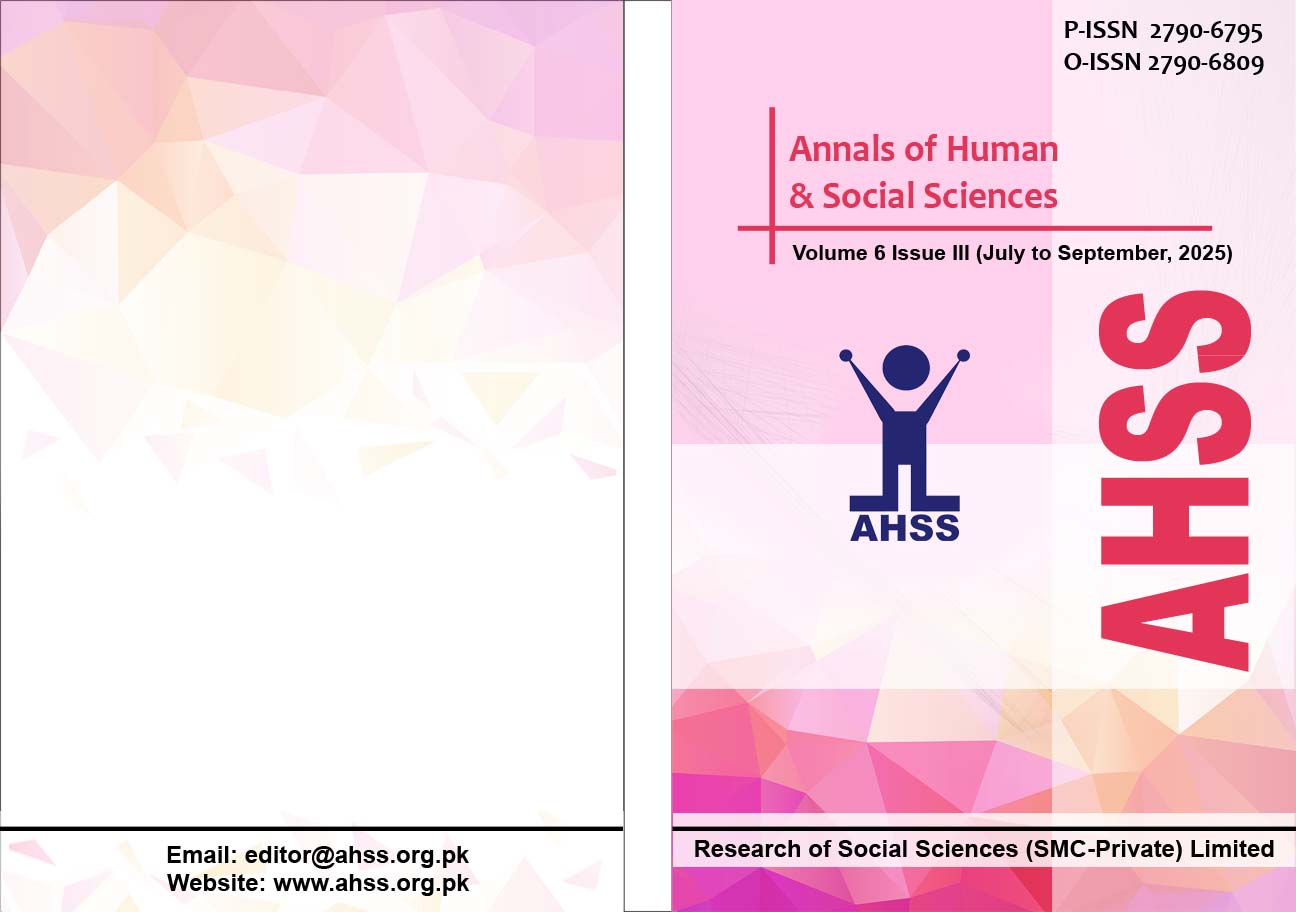From Pledges to Plots: Linking the Paris Agreement to Adaptation Outcomes in Pakistan’s Agriculture and Water Equity
DOI:
https://doi.org/10.35484/ahss.2025(6-III)59Keywords:
Climate Adaptation, Irrigation Governance, Yield Volatility, Water Equity, Difference-in-differences, Indus Basin (Pakistan)Abstract
This study investigates whether the Paris Agreement–aligned adaptation investments in Pakistan’s agriculture deliver resilience and equity at the farm level. Pakistan’s agro-economy sits where a warming climate, melting glaciers and an ageing colonial irrigation system collide. The Indus Basin, its principal food basket, faces escalating hydro-meteorological extremes and a chronic decline in per-capita water availability, threatening livelihoods and economic stability. In response, Pakistan updated its NDC in 2021 and published a National Adaptation Plan in 2023, both pledging climate-resilient agriculture and equitable water management, yet rigorous evidence on plot-scale outcomes remains scarce. We assemble a district-reach panel linking adaptation spending, canal telemetry, remote-sensing proxies of crop performance and household surveys. Difference-in-differences and event-study models show that adaptation reduces yield volatility by about six percentage points and improves water equity by seven, with effects emerging after one to two years. Results imply adaptation works mainly as a variance and equity enhancing technology, underscoring the need for transparency, open data and fairness-based evaluation metrics.
Downloads
Published
Details
-
Abstract Views: 76
PDF Downloads: 60
How to Cite
Issue
Section
License
Copyright (c) 2025 Annals of Human and Social Sciences

This work is licensed under a Creative Commons Attribution-NonCommercial 4.0 International License.

RESEARCH OF SOCIAL SCIENCES (SMC-PRIVATE) LIMITED(ROSS) & Annals of Human and Social Sciences (AHSS) adheres to Creative Commons Attribution-Non Commercial 4.0 International License. The authors submitting and publishing in AHSS agree to the copyright policy under creative common license 4.0 (Attribution-Non Commercial 4.0 International license). Under this license, the authors published in AHSS retain the copyright including publishing rights of their scholarly work and agree to let others remix, tweak, and build upon their work non-commercially. All other authors using the content of AHSS are required to cite author(s) and publisher in their work. Therefore, RESEARCH OF SOCIAL SCIENCES (SMC-PRIVATE) LIMITED(ROSS) & Annals of Human and Social Sciences (AHSS) follow an Open Access Policy for copyright and licensing.






